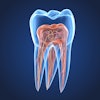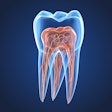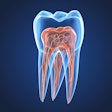
Today, October 16, is World Endodontic Day and a recent report published by the American Association of Endodontists (AAE) shows that general practitioners have been gaining patient and treatment share across various dental specialties except endodontics.
Ultimately, the data highlight the resilience of endodontists and shed new light on a trend that has been playing out in the industry since 2019, the AAE said.
“While [general practitioners] have been expanding their patient and treatment share in categories like periodontics, implants, oral surgery, and orthodontics, they have not made significant inroads into the domain of endodontics,” AAE said, in a summary of the report.
The report was developed for the AAE by market analysis firm Fluent, which maintains a multi-payer, fee-for-service dental claims database that includes monthly updates from more than 70 national and regional payers.
The analysis reveals a fascinating narrative, according to the AAE. While general practitioners have not made significant inroads into endodontics, endodontists show consistent year-over-year growth in both patient share and treatment share for endodontic procedures, according to the report.
“The data compiled by Fluent reinforces the notion that endodontists are not only holding their ground but also thriving amidst evolving dental practices,” the organization wrote.
In addition, the data analysis offers a sobering perspective on the landscape of dental networks, according to the AAE. Nationally, a staggering 79% of treatments are performed within these networks, underlining their pivotal role in patient care access.
For endodontists and other dental professionals contemplating the possibility of exiting network agreements, Fluent’s data sounds a cautionary note, the AAE said.
“While rising practice expenses, labor challenges, and stagnant or declining in-network fees may prompt dentists to consider dropping networks, the consequences deserve careful consideration,” the association wrote.
Moreover, the data illustrate that patients are highly inclined to seek in-network care, which challenges the assumption that patients will remain loyal regardless of network status, the AAE said.
The full report also includes information on how location plays a role in these trends and the influence of age demographics on endodontics.



















